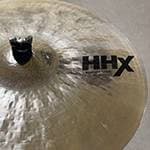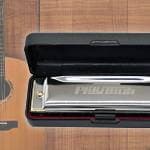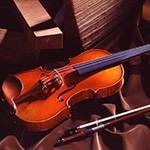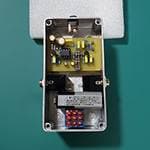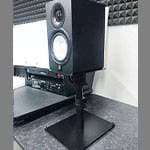Let’s skip the introduction and jump right in! Today’s topic is bridges.
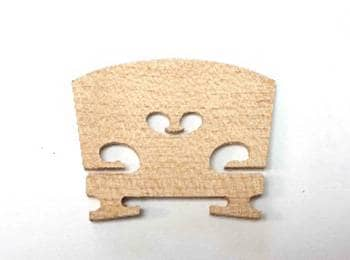
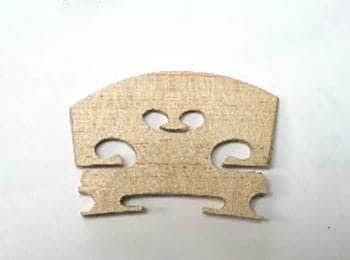
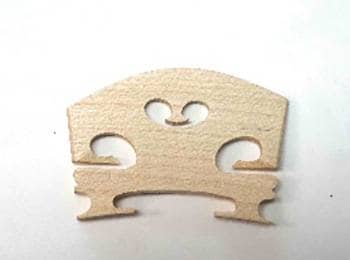
In the image, from left to right, you’ll see: a blank bridge, a factory-set bridge, and a fitted bridge.
A blank bridge is unprocessed; in other words, it doesn’t have grooves yet and it was shaped at a parts factory. In this state, it can’t be used on an instrument yet, so it needs to be shaved and adjusted into a proper form.
I’ve written previously about how bridges are ranked by quality of the material, so if you’re interested, feel free to check out that post:
Bridge Blank
Here’s an image showing a blank bridge stacked on top of a shaped bridge.
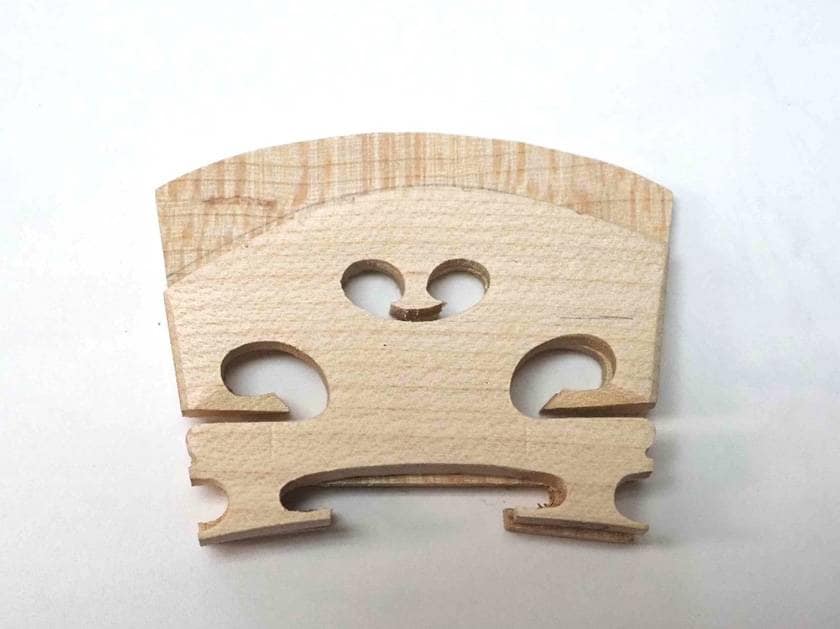
There are general guidelines when it comes to the shaving process, but the final shape is often customized depending on the person doing the work.
Factory-Set Bridge
Instruments produced in large quantities usually arrive with a bridge that has been partially cut at the factory.
However, the curvature (referred to as the “R”) of the bridge top may not be quite right, or the overall shape may be lacking. In those cases, additional hand-finishing is necessary.
You can assume that nearly all violins sold online (excluding those from Sound House) arrive in this condition.
Fitted Bridge
This is the PVN244 model that was shipped by Sound House.
Ideally, the finished bridge should reflect the player’s individual preferences as much as possible. However, in the case of mass-produced instruments sold as products, the setup is adjusted to suit the broadest range of players. It’s what you might call a “one-size-fits-all” setting.
In reality, due to time constraints and other practical limitations, anything beyond that is generally not feasible.
That said, seeing is believing. Please take a look at this video showing the bridge-shaping process.
Note: For clarity and ease of viewing, some parts of the actual process have been omitted or shortened. While this video summarizes the key points, the real process takes much more time and care.
Video Captures and Explanations
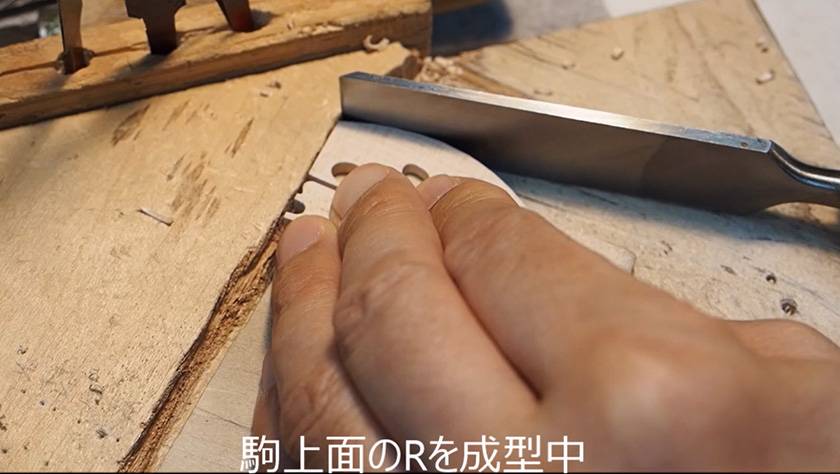
The bridge is shaved away roughly with a chisel.
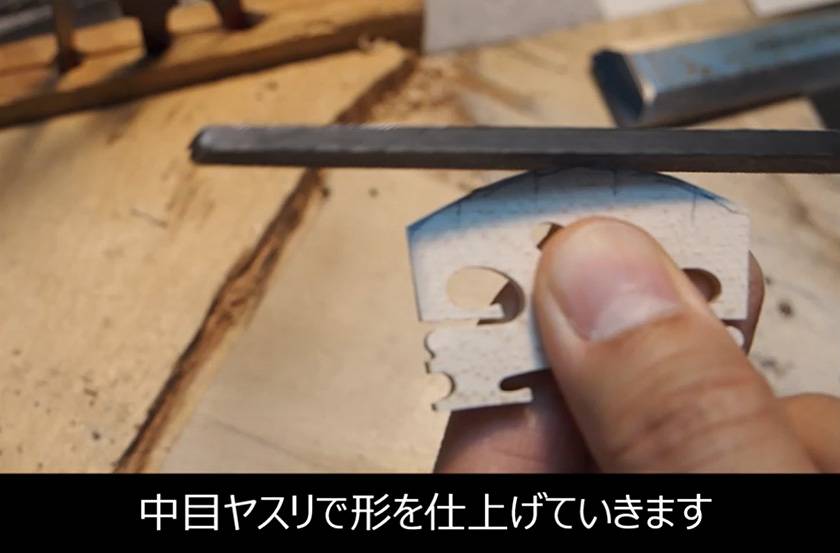
This is where the overall shape is determined.
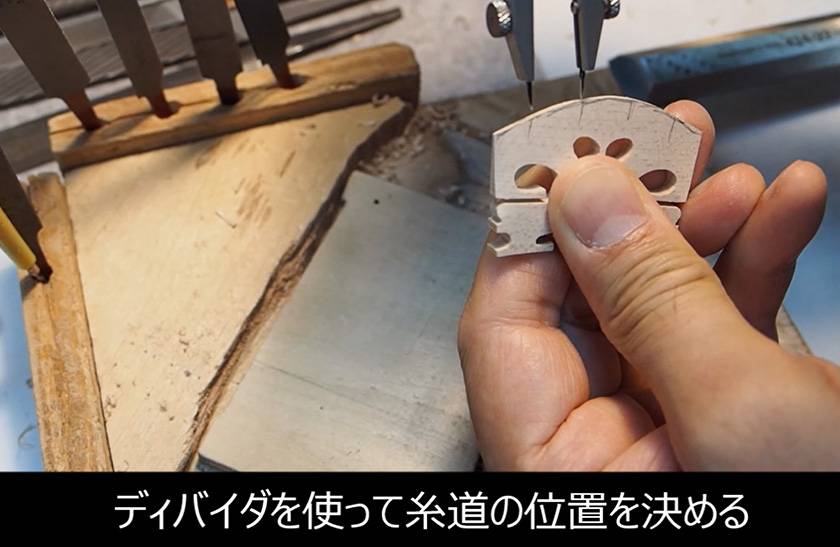
Here the grooves are being marked on the bridge at 11.5 mm intervals.
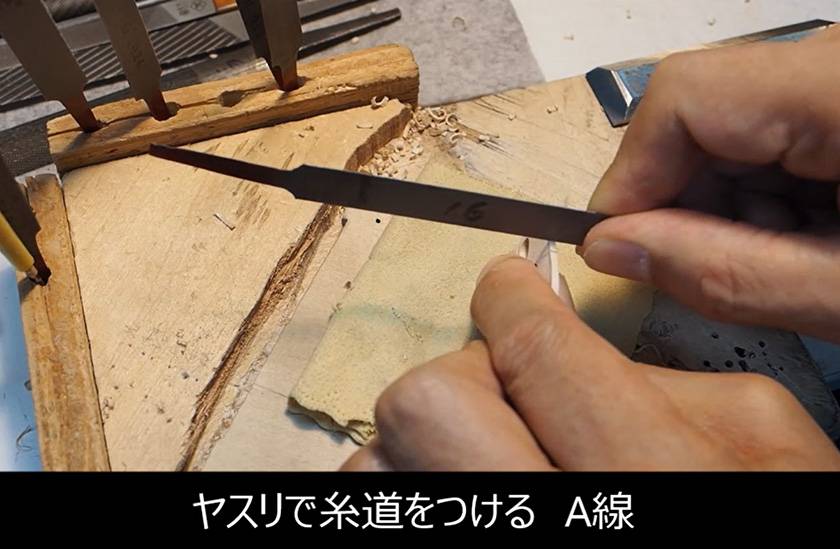
Next, a file is used to match the thickness of each string to carve the grooves.
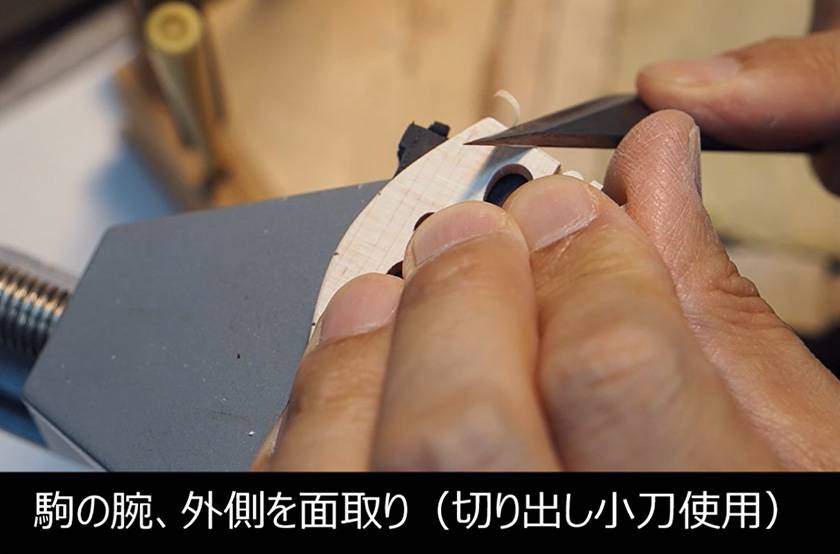
Then, the outer part of the bridge’s shoulder is shaved.
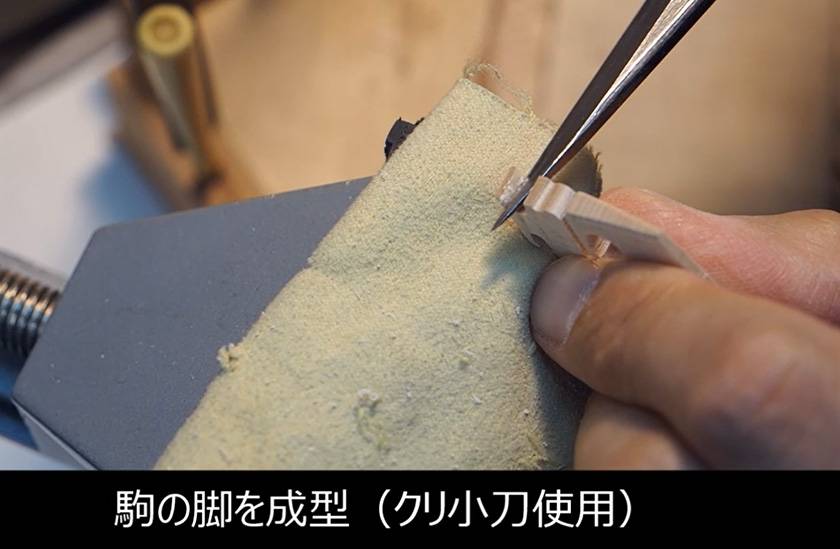
This process is called ashiguri ( opening up the legs) in Japanese. That’s just what I was taught, and to be honest, I’ve never really thought about the origin of the word in all these years.
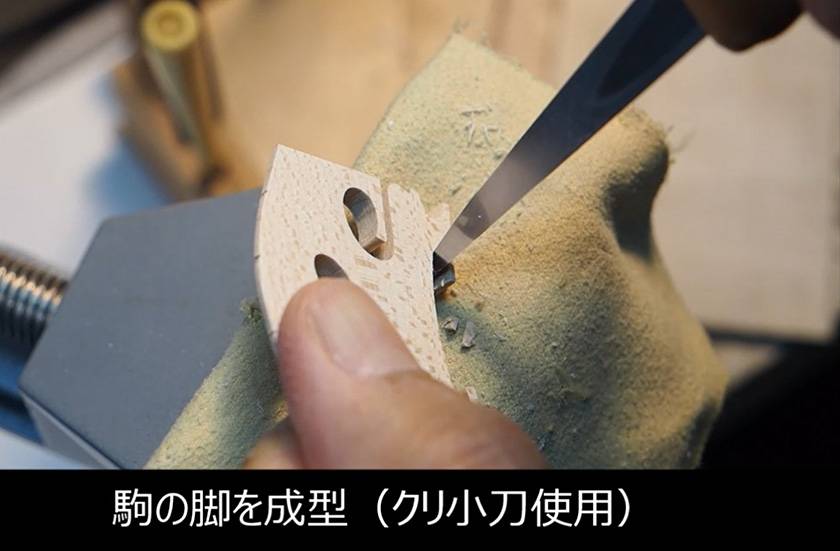
By the way, the small knife I’m using here is also called a kuri-gatana (chestnut knife).
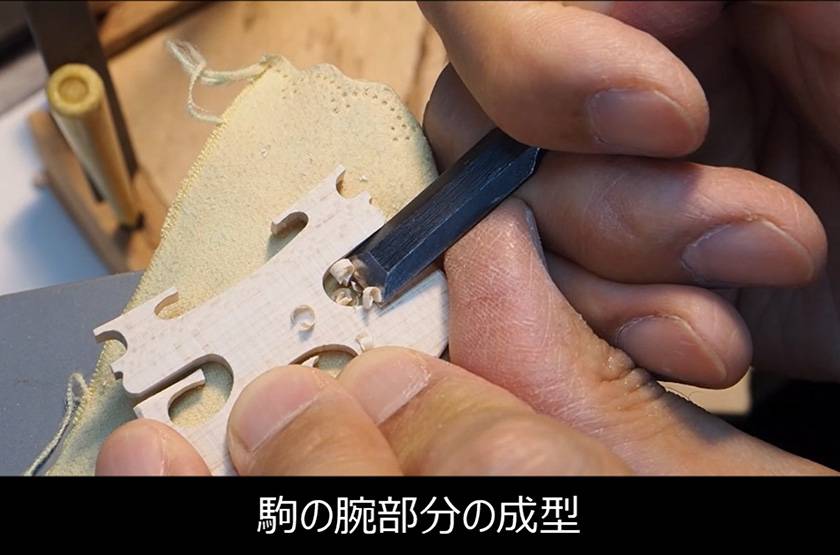
This is a carving knife that’s a flat blade. I bought it at Joyful Honda.
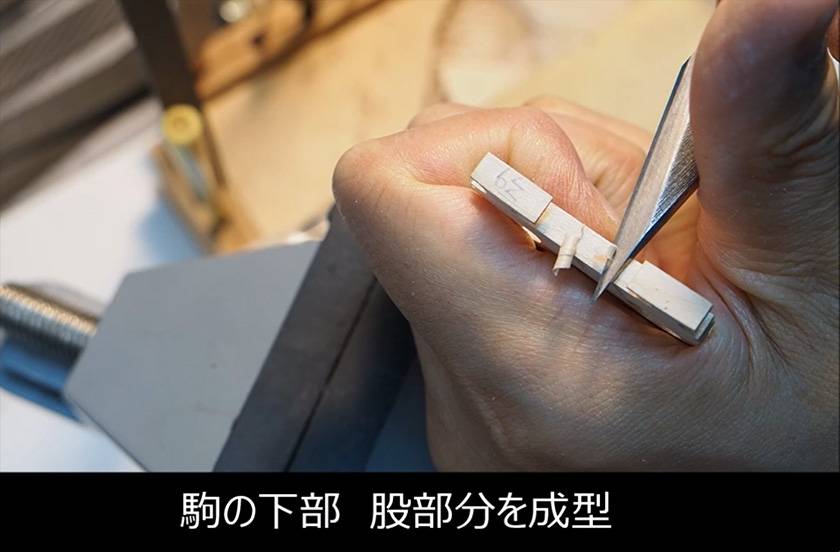
This small knife was given to me by the person I consider my mentor.
Why Do We Shave and Shape the Bridge?
This can actually be thought of quite simply:
- The sound improves
- The appearance is enhanced
These two points pretty much sum it up.
What does “sound improves” mean?
By shaving the bridge, its mass (weight) becomes lighter, and the overall thickness is adjusted appropriately. This allows the instrument to resonate more effectively.
Of course, the results vary depending on the material of the bridge and how well it matches the instrument, but thinning the bridge is one effective way to improve resonance.
Appearance
The bridge is beautifully finished. This is important in any craft.
Of course, aesthetics are subjective and overly elaborate shaping doesn't necessarily have any effect on sound. Still, if you take a closer look at the bridges on various instruments out there, you’ll notice that each one is subtly shaped in its own way, and that in itself can be quite enjoyable to observe.
Most people probably don’t often get the chance to see a large number of instruments at once, but if you ever visit a music store, take a moment to look closely at the shape of a violin bridge.
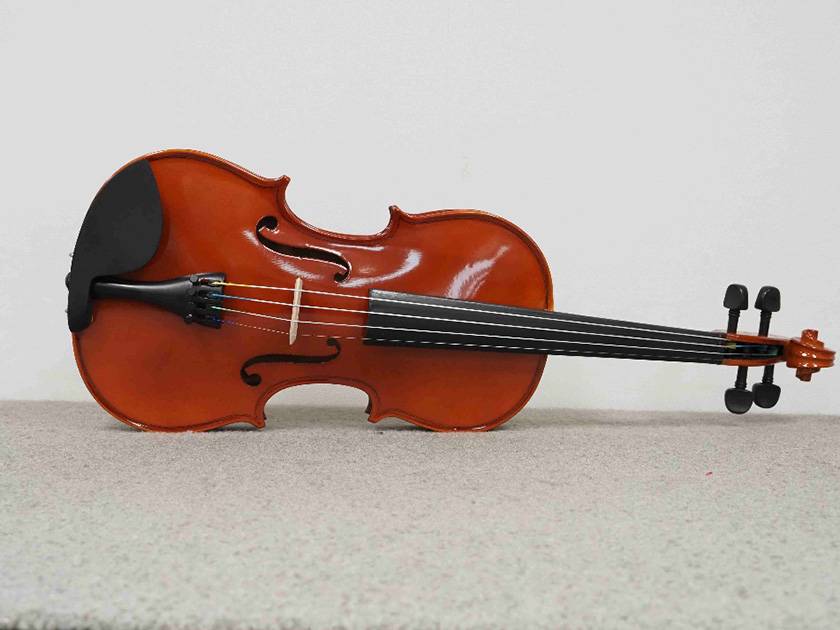
After going through all of this, we’ve pretty much done everything we could to get a good sound out of an affordable violin. So how did the PLAYTECH PVN244 sound after all the adjustments?
At this point, it would be great to share a video of the PVN244 producing a beautiful sound—but that would probably be too good to be true. In reality, due to factors like room acoustics and recording equipment limitations, it’s difficult to capture the sound accurately, and the video likely wouldn’t do the improvements justice. So, I’ll leave it up to your imagination.
That said, there’s no doubt the sound has improved.
What I really want to convey to you, the readers, is this: take your own instrument, work on it with your own hands and intention, put love into it, and aim for a better sound. I want you to be able to say, with your own ears and body, “Yes—this sounds better now!”
That is the single most important message I hoped to share through this blog.
Take a closer look at the star of today’s post—the PLAYTECH PVN244.
This is a violin I can confidently recommend.
I guess this blog was pretty effective...?
The PVN244 is running low in stock! Of course, we do have more on the way, but if you're interested, don't wait too long.
Also Recommended
PLAYTECH PVN544 — A bit more expensive, but even more highly recommended
PLAYTECH / PVN544 Outfit Violin Set 4/4
Previous Blog Posts
- Part 1 “How to Get the Best Sound Out of a Cheap Violin [Part 1] What Makes for a Good Sound? Who Decides?”
- Part 2 “How to Get the Best Sound Out of a Cheap Violin [Part 2] Strings Are the Key! The Relationship Between How Strings Are Wound on the Pegs and the Upper Nut”
- Part 3 “How to Get the Best Sound Out of a Cheap Violin [Part 3] Adjusting the Upper Nut! Is There An Upper Nut AND a Lower Nut!?”
- Part 4 “How to Get the Best Sound Out of a Cheap Violin [Part 4] “There Are No Frets on the Fingerboard! Do Violins Even Need Frets? Or Are They Impossible to Install?”
- Part 5 “How to Get the Best Sound Out of a Cheap Violin [Part 5] Sound Posts”
This post is Part 6 and will be my final article.
Thank you to all the readers who joined me throughout these six posts!
Afterword
Although changes over time are not always visible, wood subtly changes shape with temperature, humidity, and aging. In the case of string instruments, they rely on the invisible but significant force of string tension that supports and balances the entire instrument. The instrument itself has no active power to fight against that tension.
In other words, string instruments inevitably wear out and deteriorate. That’s why regular care is essential, and it goes without saying that the player’s interest in their instrument is the very first step.
The typical adjustments described in this blog are not so much promises for sound improvement but more suggestions of areas to check to determine the instrument’s condition. The improvement in sound is a result that comes afterward.
It is the player, you, who cares for your instrument. I hope you will continue to be the kind of musician who treats their instrument with care, maintains it in good condition, and thinks about how to bring out the best sound from the instrument.
When it comes to high-quality (valuable) instruments, they are assembled with animal glue and finished with natural varnish, making them extremely delicate and sensitive. In other words, although what I’ve written in this blog covers the very basics, most of it also applies to the less expensive violins that readers might acquire in the future.
I would be happy if you occasionally refer back to this blog whenever you think of violin parts.
I realized there’s something I forgot to mention: the bow.
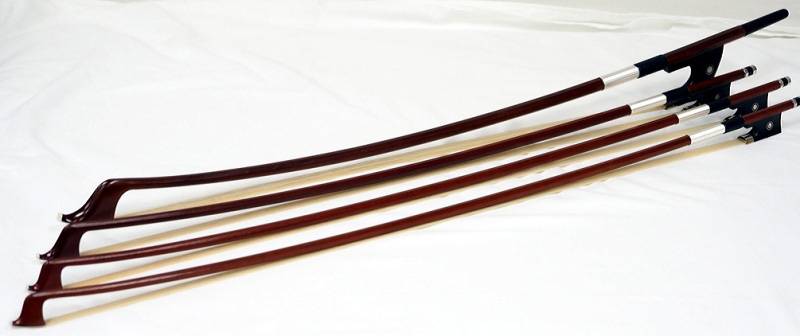
When it comes to the sound, this article is incomplete without discussing the bow. The bow is extremely important.
My next blog will be all about bows. It will probably be a long one and it too will most likely become a series.
I hope you’ll stay with me for that. Come back again.





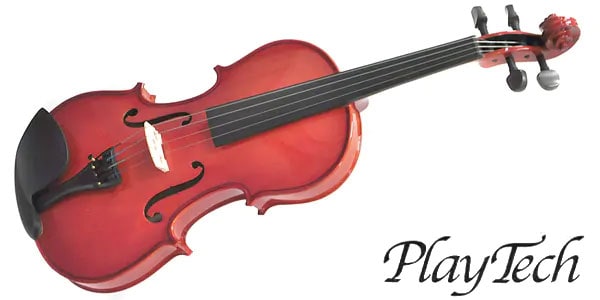
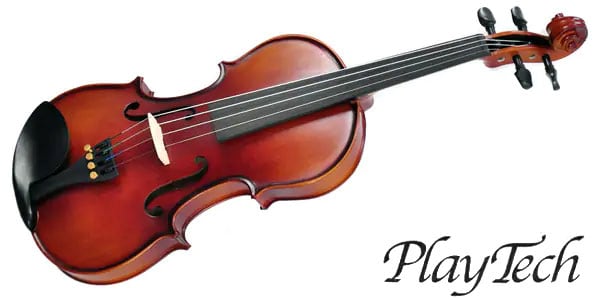
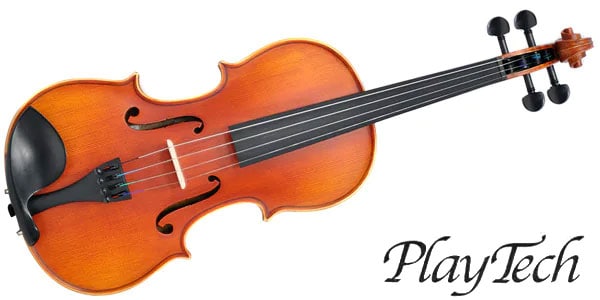

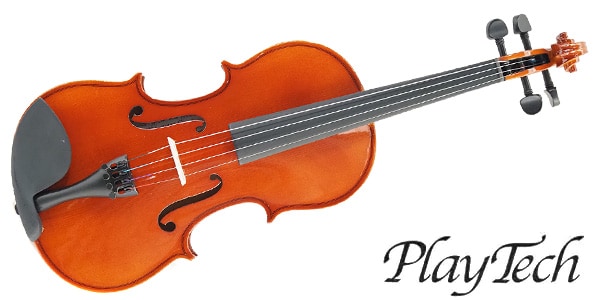
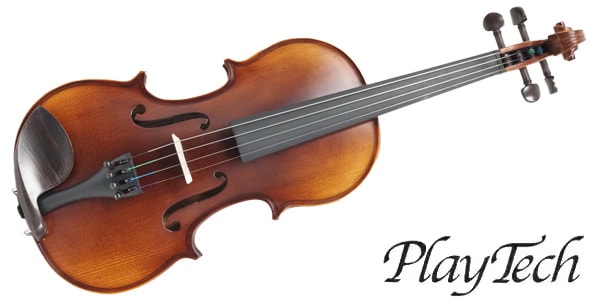

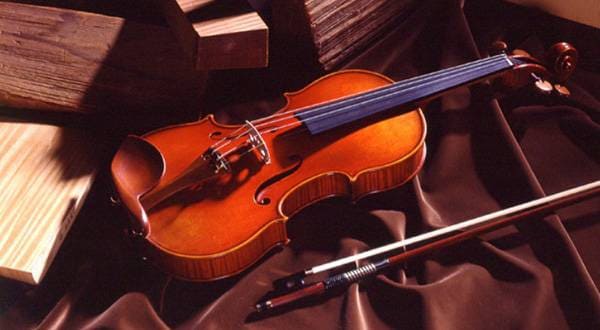
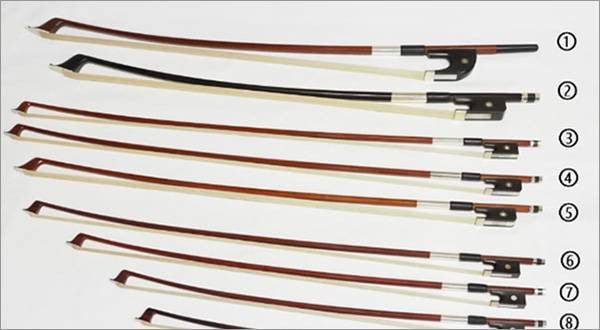
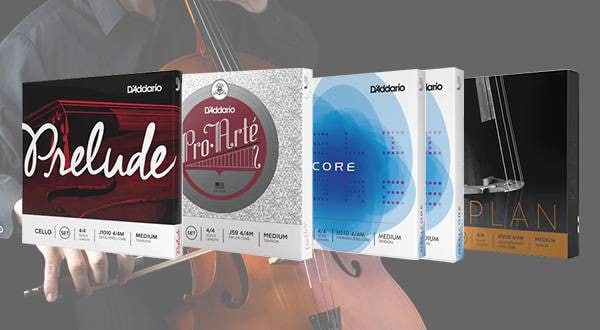
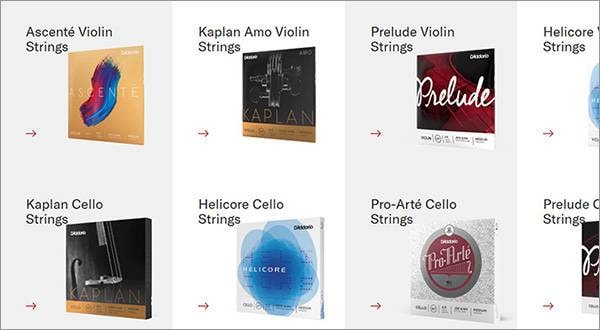
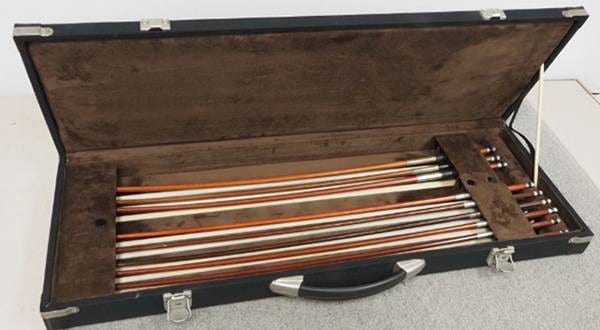
![How to Get the Best Sound Out of a Cheap Violin [Part 5] Sound Posts](/contents/uploads/thumbs/2/2025/8/20250805_2_32294_1.jpg)
![How to Get the Best Sound Out of a Cheap Violin [Part 1] What Makes for a Good Sound? Who Decides?](/contents/uploads/thumbs/2/2025/4/20250409_2_31047_1.jpg)
![[String Instruments] Introducing Recommended Violin Sets](/contents/uploads/thumbs/2/2024/5/20240516_2_26873_1.jpg)
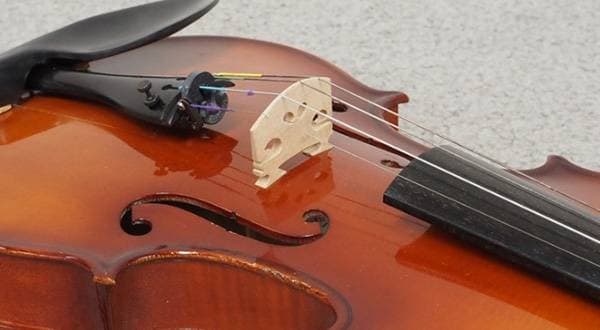
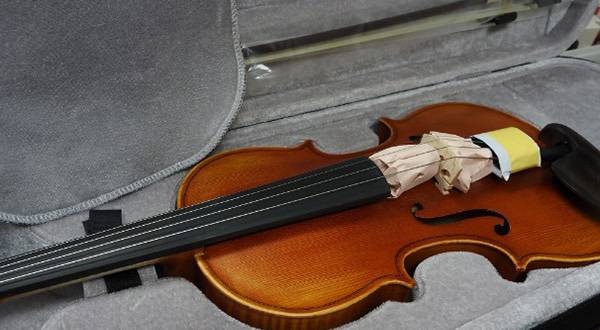
![[Strings] An Introduction to Recommended Violin Tuners](/contents/uploads/thumbs/2/2024/2/20240221_2_25757_1.jpg)
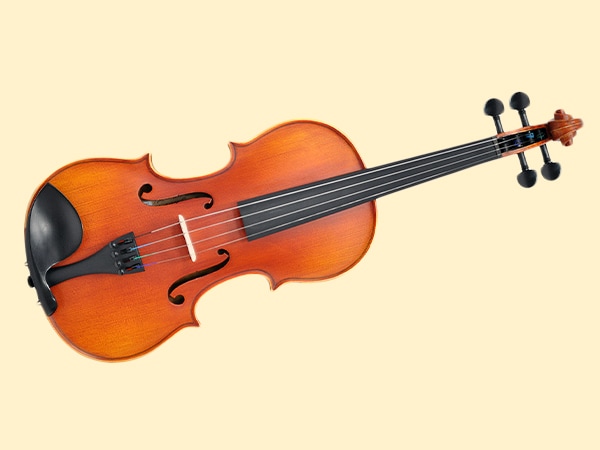 バイオリン 入門ガイド
バイオリン 入門ガイド
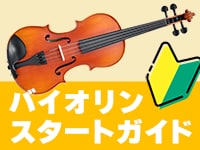 バイオリンスタートガイド
バイオリンスタートガイド
 PLAYTECH 弦楽器
PLAYTECH 弦楽器
 バイオリンの手入れ
バイオリンの手入れ
 バイオリンの基本的な取り扱い
バイオリンの基本的な取り扱い
 弦楽器 初心者講座
弦楽器 初心者講座
